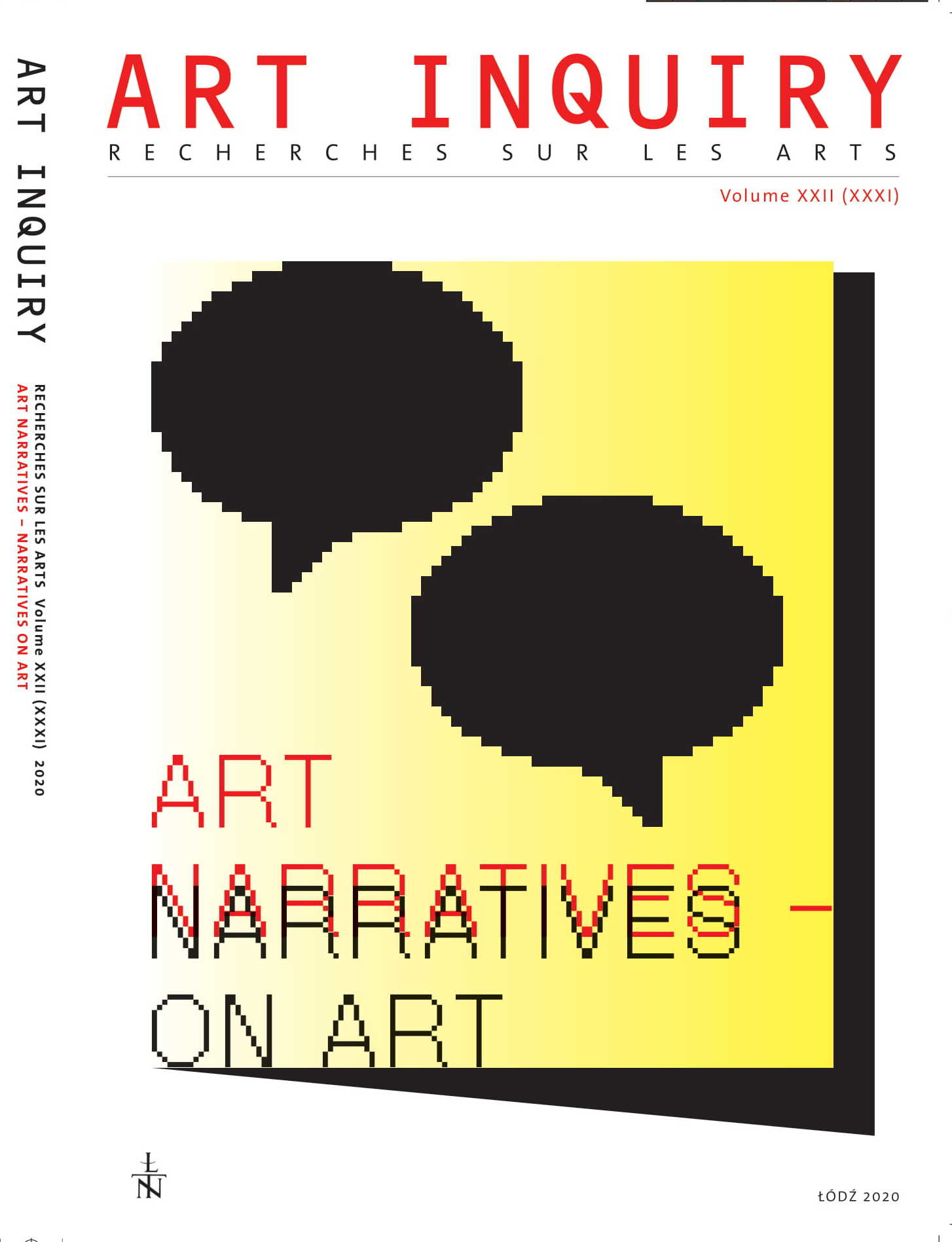Anselm Kiefer at the Louvre Museum and Olafur Eliasson in Versaille: on the narrative space of a work of art
DOI:
https://doi.org/10.26485/AI/2020/22/7Keywords:
Anselm Kiefer, Olafur Eliasson, Louvre, Versailles, narrative, memory, history, ecologyAbstract
Anselm Kiefer and Olafur Eliasson, even if divided by generational differences and the material of their art, they share a similar understanding of the function of the work as a narrative medium. The place where the work is exhibited, its historical value and the story it contains force us to reverse the conventionally accepted significance of the presence of contemporary art in two globally recognized, most important museums of France: Kiefer's at the Louvre and Eliasson's at Versailles.
The exhibition of the works of these artists at places that represent historical, symbolic and artistic significance both for the French, as well as the whole world, allowed their narrative function to extend and thus to change the perception of the place of a contemporary art exhibition. The connection of contemporary times with history is also an attempt to open the borders defined by the traditional location of the place. Both presentations aim to show how the perception of contemporary art can be changed when it is understood as a continuation of great historical narratives.
In 2007, Kiefer exhibited three works at the Louvre. The artist incorporated his works in the framework of the narrative – history, philosophy, religion, art history, tradition and modernity. In 2016, Eliasson presented sculpture-installations in the gardens and palace of Versailles, in the form of architecture and garden design works whose message is the anxiety and concern about the fate of the modern world. Just as illusory was the world in which the inhabitants of Louis XIV’s Versailles lived, so is our own illusion of a world without borders, a world with endless natural resources, where our conscience is numbed by apparent actions to protect it from ecological disaster.
References
Berens Edward M. (2009) The Myths & Legends of Ancient Greece and Rome, MetaLibri, Amster¬dam 2009, pp. 26-27, http: //metalibri.wikidot.com (26.4.2020).
Bernadac Marie-Laure, Athanor, https://www.louvre.fr/sites/default/files/medias/medias_fichiers/fichiers/pdf/louvre-dossier-presse-anselm-kiefer.pdf (19.4.2020).
Człowiek, który ujarzmia żywioły, Jana Pelczar’s interview with Olafur Eliasson “Przekrój” 2019, no. 2 (3565), pp. 152-153.
Eliade Mircea (1966) Traktat o historii religii, transl. Wierusz-Kowalski Jan, Warszawa, Książka i Wiedza.
Eliade Mircea (1993) Kowale i alchemicy, transl. Leder Andrzej, Warszawa, Fundacja Aletheia.
Eliade Mircea (2015) Le chamanisme et les techniques archaïques de l’extase, Paris, Bibliotheque historic Payot, Broché.
http://pei-architects.com/ (17.4.2020).
http://exspace.pl/articles/show/1717, 21. 10. 2018. (4.1.2020).
https://mfiles.pl/pl/index.php/Protok%C3%B3%C5%82_z_Kioto (2.1.2020).
https://olafureliasson.net/archive/artwork/WEK100727/your-black-horizon (2.1.2020).
https://www.yatzer.com/olafur-eliasson-versailles/slideshow/20 (3.1.2020).
https://olafureliasson.net/archive/exhibition/EXH102421/olafur-eliasson-versailles (4.1.2020).
https://www.yatzer.com/olafur-eliasson-baroque-baroque (5.1.2020).
http://www.tanyabonakdargallery.com/artists/olafur-eliasson/series (5.1.2020).
Jung Carl Gustav (1999), Psychologia a alchemia, transl. Reszke Robert, Warszawa, Wydawnic¬two Wrota.
Klibansky Raymond, Panofsky Ervin, Saxl Fritz (2009) Saturn i Melancholia. Studia historii, filo¬zofii, przyrody, medycyny religii oraz sztuki, transl. Kryczyńska Anna, Kraków, Universitas.
Kubiak Zygmunt (1997) Mitologia Greków i Rzymian, Warszawa, Świat Książki.
Martin William Alexander (2016) The Lore of Cathany, or, the Intellect of China, Wentworth Press, New South Wales.
Pacquement Alfred, Pégard Catherine (2016), Olafur Eliasson. Versailles 7 juin – 30 octobre 2016, edit. Château et les Jardins parla Cour du Château de Versailles.
Pevsner Nikolaus (1980) Historia architektury europejskiej, vol. II, transl. Wydro Jan, Warszawa, Arkady.
Pietkun ks. Witold (1954) Maryja Matka Chrystusa. Rozwój dogmatu maryjnego, Warszawa, PAX.
Terrasse Jean-Marc (2007) Frontieres, en nous, hors de nous, nous – Entretien Jean-Marc Terrasse, Anselm Kiefer, in : Anselm Kiefer au Louvre, edit. du Regard, Paris, pp. 21-34.



